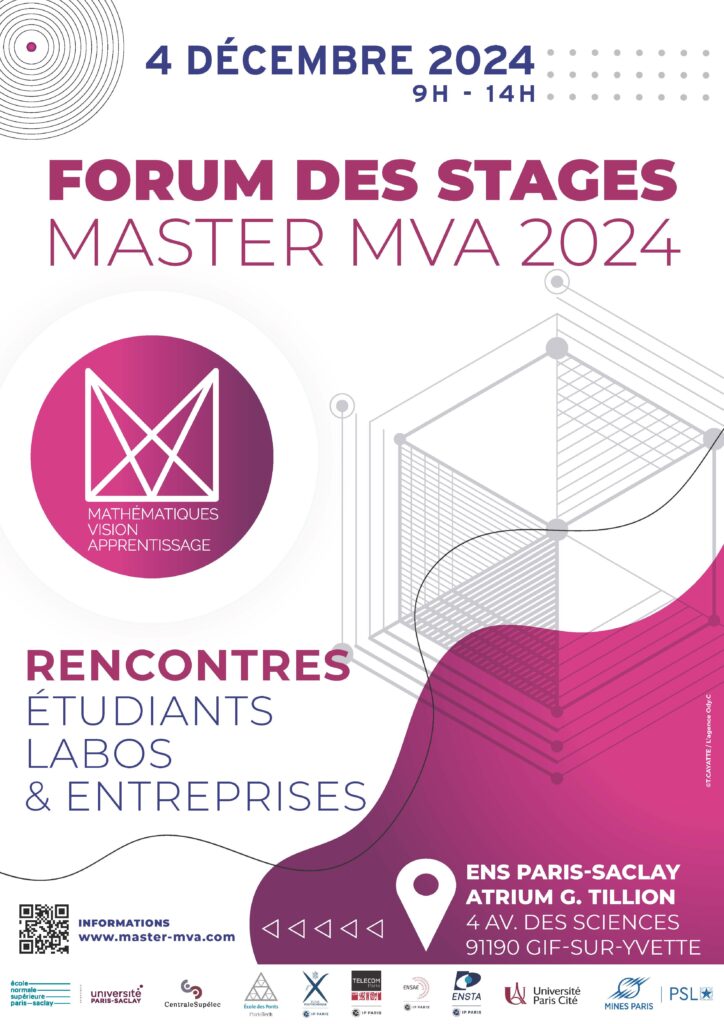Prè-requis
- The « Introduction to Deep Learning » course by Vincent Lepetit (taking place during the 1st semester)
- Notions in machine learning, Bayesian statistics, analysis, differential calculus.
- Basic knowledge of Python and PyTorch.
Objectif du cours
Organisation des séances
The course will comprise lectures as well as practical and theoretical exercises (in PyTorch), which will be evaluated.
The practical sessions will be run on personal laptops (no GPU needed).
Announcements are made through a dedicated mailing-list; questions and discussions take place on an online forum.
All details are available on the course webpage: https://www.lri.fr/~gcharpia/deeppractice/ or when subscribing to the mailing-list.
Mode de validation
The evaluation of the course is based on 6 exercises.
Références
. Related conferences:
– machine learning: NIPS / NeurIPS, ICML, ICLR
– computer vision: CVPR, ICCV, ECCVRelated books:
– « Deep Learning » by I. Goodfellow, Y. Bengio and A. Courville
. Examples of references:
– « Do Deep Nets Really Need to be Deep? »; L. J. Ba, R. Caruana; NIPS 2014
– « Graph Attention Networks »; P. Velickovic, G. Cucurull, A. Casanova, A. Romero, P. Lio, Y. Bengio; ICLR 2018
– « Women also Snowboard: Overcoming Bias in Captioning Models »; L. A. Hendricks, K. Burns, K. Saenko, T Darrell, A Rohrbach; FAT-ML 2018
– « Scaling description of generalization with number of parameters in deep learning »; M. Geiger, A. Jacot, S. Spigler, F. Gabriel, L. Sagun, S. d’Ascoli, G. Biroli, C. Hongler, M. Wyart; arXiv 2019
– « Deep Sets »; M.Zaheer, S.Kottur, S. Ravanbakhsh, B. Poczos, R. Salakhutdinov, A. Smola; NIPS 2017
– « DGM: A deep learning algorithm for solving partial differential equations »; J. Sirignano and K. Spiliopoulos; Journal of Computational Physics 2018
Thèmes abordés
– Deep learning vs. classical machine learning and optimization
– Interpretability
– Architectures
– Small or noisy data: forms of weak supervision
– Modeling: deep learning and physics (exploiting known invariances, priors or physical properties)
– Generative models (GAN, VAE and Normalizing Flows) + Auto-ML / Auto-DeepLearning
– Guarantees? Generalization and formal proofs
